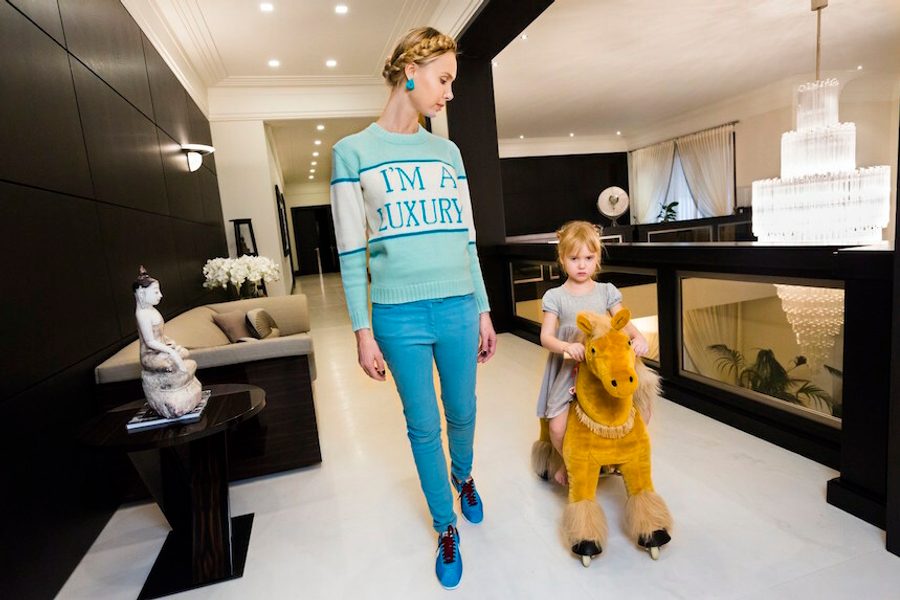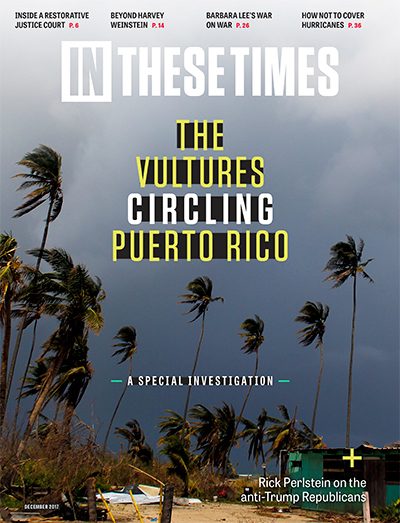Lauren Greenfield’s Look at the Children of the New Gilded Age
The creator of The Queen of Versailles on the “hamster wheel of wanting more and more.”
Hannah Steinkopf-Frank

Generation Wealth, Lauren Greenfield’s 25-year retrospective on the pursuit of the American dream, first opened at the Annenberg Space for Photography in Los Angeles and is now on display at the International Center of Photography in New York through Jan. 7, 2018. In These Times spoke with Greenfield about the exhibition and her book of the same name.
How did you become interested in wealth?
I had been looking at stories around consumerism and body image in popular culture. Then the 2008 financial crash happened while I was making the movie The Queen of Versailles, about the family building the biggest house in America, a 90,000-square-foot palace inspired by Versailles. When their story became a supersized foreclosure story, I saw how we were caught in this hamster wheel of wanting more and more. This was not limited to the rich but was across race, across borders, across age. When you tell somebody that they’re not good enough, that makes them want to buy something to rectify that, and that’s a great motor for capitalism.
How do you think we got here?
One was the explosion in marketing, especially to the most vulnerable. I had spent a lot of time looking at kids and girls, specifically, and how advertising influenced them. When you tell somebody that they’re not good enough, that makes them want to buy something to rectify that, and that’s a great motor for capitalism. What I saw was that it wasn’t just girls. It was also people who were aging, people in former Communist countries wanting to compete with the West and poor people. The explosion in technology had put that on turbo drive.
I also saw the 1980s as this watershed moment with people thinking that money made you a good person. People used to compare themselves to their neighbors who had a little bit more than they did. What happened in the 25 years since was that people were spending more time with television characters who kept becoming more affluent. Keeping up with Joneses literally became Keeping Up with the Kardashians. Kim Kardashian [who Greenfield has photographed] not only represented the family people were aspiring to, but she also started with a sex tape. It felt like we were living in a post-moral world where it didn’t matter how you became rich and famous as long as you did.
Going through your photos, did you have any a-ha moments on the current financial situation?
There was an a-ha character in Florian Homm, a hedge fund manager in Germany who had been worth $800 million and was accused of fraud. He went on the run and did jail time in Italy (he was released on a technicality), and realized he was chasing the wrong god. He wanted to tell the story about what he learned.
The weird thing was that I had known him in college. He was the only person I knew who had a vintage convertible car because even then, he was doing business and was rich. Years later I read about him in the New York Times: He had fled to Germany and was on the FBI’s most wanted list. He’d traversed the same 25 years that I had but from a completely different vantage point. I photographed and interviewed him, he was incredibly insightful but also had been kind of the worst of the worst. He’d lost everything, not just his money, but his marriage, his children, his freedom — he was still a fugitive from justice in the United States. Some people are skeptical: Did he really learn his lesson? But for me, it doesn’t matter. That’s one of the questions of the book. I saw it through the lens of addiction: How low of rock bottom do we have to hit before we change our behavior?
What connections do you notice between the expressions of wealth you’ve captured and President Trump’s projection of success?
I think there are a lot of commonalities. He has an over-the-top aesthetic of wealth. Gilded apartments and Corinthian columns are aristocratic symbols of wealth and power. He’s also complicit in the commodification of women through beauty pageants and as expressions of success. We see this on the cover of my book, with the wife of an oligarch wearing a sweater that says, “I’m a luxury.” I think Trump’s narcissistic qualities are really representative of the culture. He’s the ultimate “fake it till you make it.”








